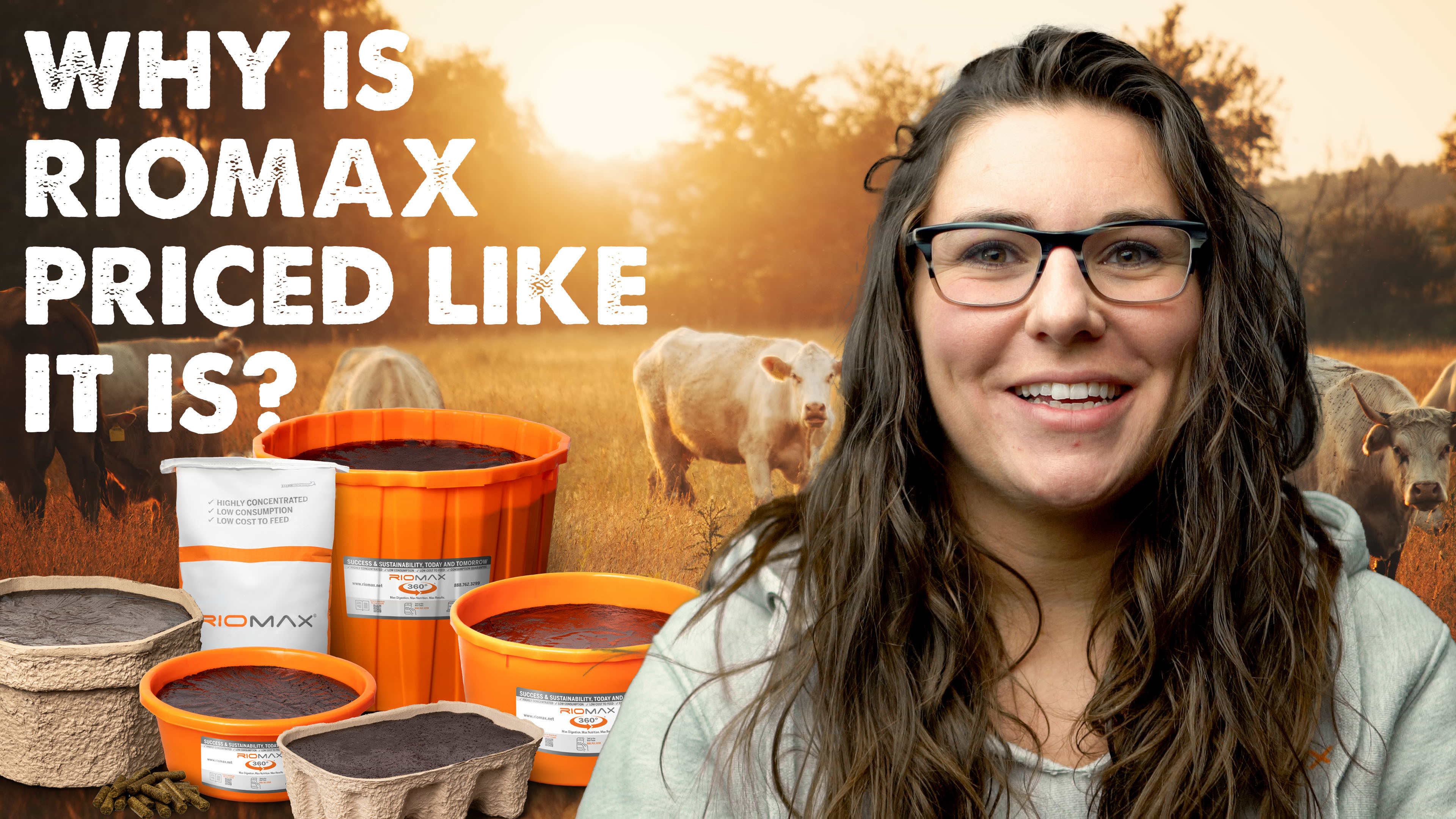Last updated on October 20th, 2023 at 09:23 am
We get it. You are faced with tight margins, high pressure, and tough times. Being a rancher isn’t easy, so how can you alleviate some of this stress?
Your initial response might be to reduce input costs by finding a cheaper supplement. But have you ever stopped to think about what kind of long-term effect that could have on your cattle herd?
Many ranchers judge cattle supplements by their upfront cost, which is completely understandable. But what makes some supplements have that higher upfront cost? Riomax®, for example, is 2-3 times more expensive than many other products like it on the market. Because of this, we get asked nearly every day, why is Riomax® so expensive?
The truth is, Riomax® is higher-priced if you just look at the upfront cost. But as we once learned from a nutritionist, the true cost is the cost per head per day. Dairies and feedlots have been calculating costs this way for years, and it only makes sense that cow/calf producers do too.
Not all lick tubs are created equal.
It's not uncommon for lick tub companies to pick a price point they think customers will pay, and then find ingredients that fit into their price point. Unfortuanately, this makes the upfront price look reasonable, but the ingredients are of poor quality. For example, instead of filling their tub with 100% protected trace minerals (which are more expensive), they may use some sulfates and oxides as well, which have a much lower chance of getting into the bloodstream, where the cow can actually use them. Another common filler ingredient is salt, because it's cheap.
This is why it's important to analyze the tag of your lick tub and use it to determine whether it's really a fit for you or not. If you're feeding something that has a cheap upfront price tag, but it's not doing much to improve your livestock performance, is it really worth it?
So, what makes Riomax® 'different'?
Concentration
The quick answer is, we’re more concentrated. Yes, the price of Riomax® 2-3 times that of other products, but typically, it will also last 2-3 times longer. That means that your cost per head per day is neck-in-neck with other brands, and many times less. Because Riomax® is more concentrated, it means there are fewer 'filler' ingredients. Large quantities of filler ingredients, like molasses, salt, and other commodities, are low cost and do not bring you much real value, but do tend to make the upfront cost lower and the cost to use higher.
Low Consumption
So upfront, Riomax® is higher-priced because it’s highly concentrated. But, the consumption is low (between ⅛ - ⅓ pound), it's backed up by our consumption guarantee, and on a cost per head per day, Riomax® is typically lower than most other products out there. Additionally, Riomax® products are filled with high-quality ingredients, like 100% protected trace minerals and a multi-component digestion pack.
Quality Ingredients
Instead of engineering the tub to meet certain price requirements, Riomax® tubs are created with results in mind. They're designed to boost performance and help your livestock reach their full genetic potential, while still being cost-effective. Because studies have shown that cheap, poor-quality mineral and digestion components can have negative impacts on rumen microbes and long-term performance, it only made sense for us to steer away from them.
Cost-Effective
At the end of the day, though, whatever you supplement must 'pencil out' and provide return on investment. To ensure Riomax® is economically viable, it was designed to be ultra-concentrated. This allows the tub to last far longer than a typical lick tub and to provide more feedings per barrel. Because it's so concentrated, it also has a very low cost per head per day.
What is your true lick tub cost?
We at Riomax® felt that it was our job to help you see your true cost; your cost per head per day. We would be doing you no favors if we only looked at upfront cost. As that old nutritionist once told us, cost per head per day is where the rubber meets the road.



